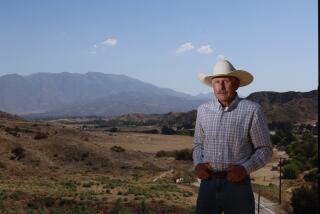Market for Industrial Space Tightens
Industrial real estate investment and sales activity in the Los Angeles Basin reflects the sustained growth of the region’s economy, according to a report from the American Industrial Real Estate Assn.
Veteran industrial real estate professionals said the latest data--combined with the most recent sales prices and rental rates--demonstrate a shortage of modern warehouse facilities.
Purchases of industrial buildings by investors and occupants were up 21% in the third quarter (over the second) to about 3.45 million square feet, according to the real estate group.
“Pricing is at an all-time high as investors look at the shortage of space and anticipate future rent increases,” said Steve Silk, senior director at brokerage Cushman & Wakefield. Pension funds are the most active investors, primarily going after the undersupplied “bulk-distribution” types of buildings, he added.
Although the real estate group reported that overall combined sale and leasing activity was off slightly, at about 10.13 million square feet, from the previous three months, Silk and others said they were not surprised: The short supply of warehouses means companies that use the buildings have little room to expand.
Real estate developers and industrial-building users could use more appropriately zoned land, “but God’s not making any more of it,” quipped Mike Del Santo, a managing director with brokerage CB Richard Ellis.
Whereas a number of large industrial buildings are under development in the more sparsely populated Inland Empire, Del Santo said, developers targeting the close-in markets often must tear down older facilities or buy buildings with excess land.
For example, buyers quickly snapped up half a dozen or so new buildings offered by local developers who bought and tore down a portion of an old Alcoa plant in Vernon, he said.
Rents at top-quality buildings have jumped an average of about 10% this year after rising by a similar level in 1998. Sales prices have exceeded $70 per square foot for the first time ever.
Del Santo noted, however, that land prices have yet to revisit the peaks of the late 1980s, probably because developers and their financiers are reluctant to speculate as much as they did a decade ago.
Brokerage Grubb & Ellis’ third-quarter statistics indicate a record low vacancy rate of just above 4% among L.A. County industrial buildings. Nearly 10.7 million square feet of buildings are under construction, with the north county markets in and around the San Fernando, Santa Clarita and Conejo valleys home to 42% of it.
Real Estate Trends
Mid-Wilshire Office Net Absorption
(in millions of square feet)
Eight-quarter average: -0.02 million square feet.
Mid-Wilshire Office Vacancy Rates
3rd quarter 1999, wiht sublet: 14.0%
Without sublet: 13.6%
Note: Net absorption reflects the gain in rented space. Vacancy rate is the total vacant square footage divided by total rentable square footage in all existing buildings. Sublet space is space rented by primary tenants that is vacant and available for sublease.
Source: CoStar Group Inc.
More to Read
Inside the business of entertainment
The Wide Shot brings you news, analysis and insights on everything from streaming wars to production — and what it all means for the future.
You may occasionally receive promotional content from the Los Angeles Times.










